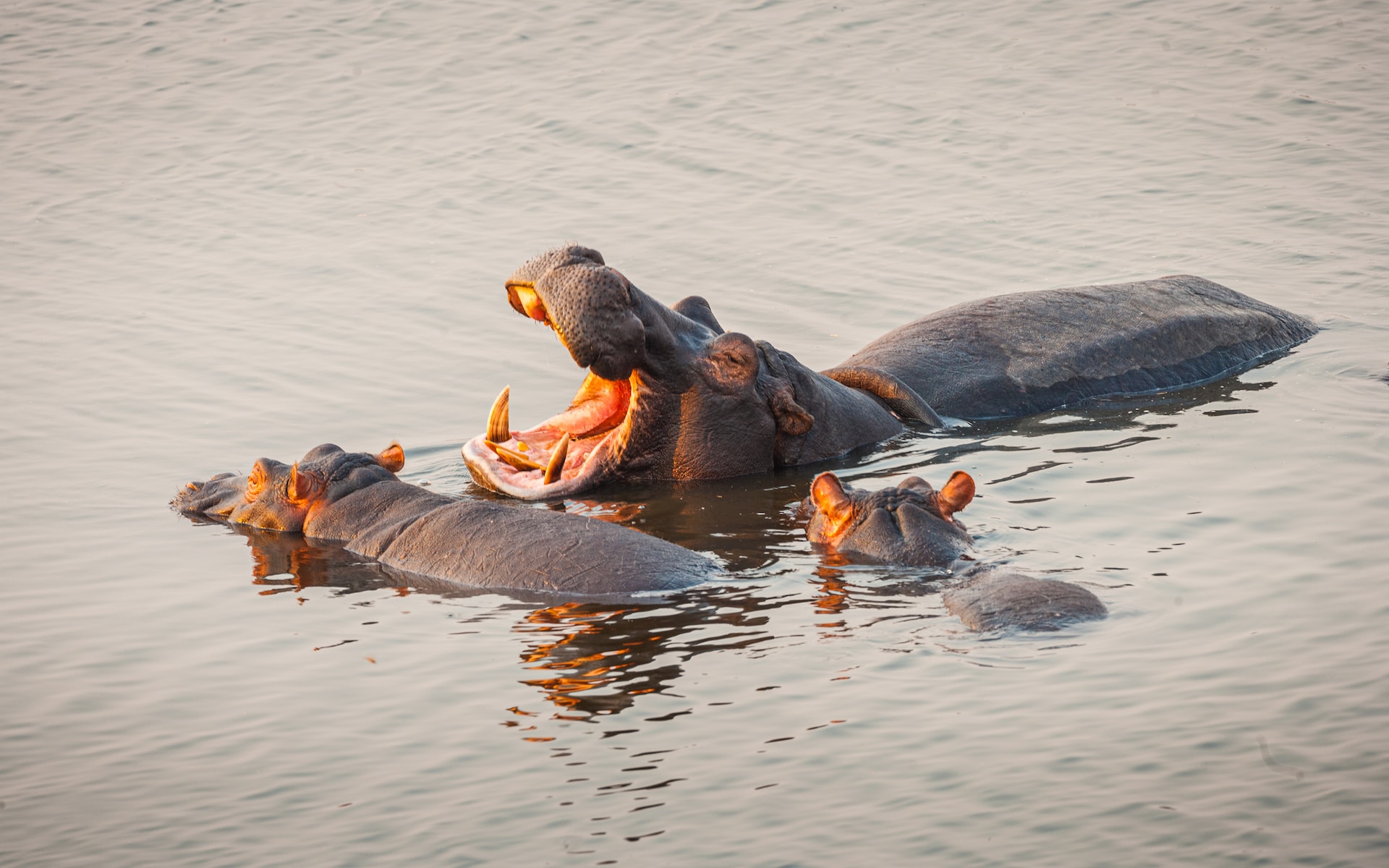Explore the charm of the Republic of the Gambia, a West African gem surrounded by Senegal. From the vibrant urban vibe of Banjul to the tranquility of the Gambia River, discover a unique blend of landscapes in this small but captivating country. Immerse yourself in the lush greenery and diverse wildlife, but beware of dangerous animals in Gambia—venomous snakes and aggressive predators add an exhilarating edge to your adventure. Plan your journey wisely, prioritize safety, and experience the thrill of encountering nature’s wonders in this enchanting destination.
Table of Contents
Hippopotamus

Encountering hippos in Gambia poses a serious risk, as these large animals, weighing up to 2 tons and standing at 1.5 meters tall, are responsible for around 3000 annual deaths in Africa. Recognizable by their two sharp teeth, hippos inhabit the wetlands of the region and are herbivores, foraging for leaves, twigs, and crops in the evenings. Given the dangers they pose, it’s crucial to stay in safe areas during your visit to avoid potential encounters with these powerful creatures.
African Leopards

African leopards, though nearly extinct in Gambia, remain dangerous due to their sharp teeth and claws. Their adaptability to various environments makes encountering them unpredictable. Found deep in the forests, leopards prey on gazelles and antelopes. Despite the slim chance of spotting them, it’s essential to keep a safe distance, as their unpredictable nature and powerful physical attributes make them a threat.
Emperor Scorpion

In the grasslands, bushes, and thickets of Gambia, the emperor scorpion, the world’s largest scorpion, poses a significant danger. With its sizable venomous pincers, this creature can deliver a dangerous sting. While not inherently aggressive, caution is paramount, as a sting from the emperor scorpion can lead to severe consequences, including loss of muscle function, blurred vision, and, if left untreated, potentially fatal outcomes. Immediate medical attention is crucial in case of an attack.
Mosquitoes

Mosquitoes in Gambia, thriving in the hot and humid climate, are carriers of diseases such as dengue fever, yellow fever, malaria, and West Nile virus. The female anopheles mosquito, in particular, is a primary agent causing malaria. With over a million annual deaths attributed to malaria, these mosquitoes are undoubtedly dangerous. If bitten, seeking prompt medical attention is essential to address potential infections and diseases.
Puff Adder

Puff adders, among the most dangerous animals in Gambia, inhabit the wild, grasslands, bushlands, and forests, causing more deaths in Africa than any other snake. With their ability to camouflage perfectly, these snakes strike without notice, making them particularly hazardous.
Growing up to around 4 feet, puff adders have fangs that deliver potent venom. The prevalence of these snakes in areas with human populations requires careful consideration when exploring the country. Awareness and caution are crucial, as over 32,000 people succumb to puff adder bites annually. The color variation of puff adders depends on the specific region you are visiting.
Nile Crocodiles

Encountering Nile crocodiles in Gambia poses a significant threat, especially in water bodies across the region. Agile and aggressively territorial, these creatures, with their thick armored skin, razor-sharp teeth, and exceptional muscles, rank among the most dangerous animals in Gambia.
Camouflaging in the water with mud, they lie in wait, often half-submerged, eyes and nostrils exposed. Nile crocodiles, known for ferocious attacks, use their tail and teeth to drown their prey. Growing up to 15 feet and weighing over a ton, these formidable predators can turn seemingly routine encounters into fatal incidents, with over half of their attacks resulting in fatalities.
Black Mamba

In Gambia, the black mamba stands out as one of the most dangerous animals, recognized as the most venomous snake globally. With a speed of about 20 kilometers per hour, these aggressive creatures can be found in various habitats, camouflaging themselves. Their unique ability to chase humans makes them particularly hazardous.
Growing up to 14 feet, black mambas possess impeccable day and night vision, and their venom can cause fatalities within an hour. Their iconic fangs release a venom potent enough to kill ten adult men with a single bite. While avoiding interference is crucial, immediate clinic visits become imperative if an unfortunate encounter occurs.
African Rock Python

The African rock python, a perilous snake, lurks in the grasslands, forests, and rocky regions of Gambia, along with other West African countries. Reaching lengths of up to 6 meters, encountering these snakes demands caution. The guidance of a knowledgeable guide is crucial to navigating regions where pythons inhabit. Maintaining a safe distance and adhering to your guide’s instructions are key safety measures to prevent potential attacks during your exploration.
Great White Sharks

Exploring the Atlantic Ocean waters in Gambia comes with the potential danger of encountering great white sharks, known for their over 300 razor-sharp teeth. Although these sharks typically do not seek out humans, misunderstandings in their habitat may lead to attacks.
With speeds exceeding 40 kilometers per hour, these creatures can be extremely dangerous. While reports indicate that attacks on humans are rare, the consequences are severe, often resulting in the loss of limbs and, in some cases, fatalities. Careful consideration and awareness of their presence are essential when venturing into the waters of the Atlantic Ocean in this region.
_______________
Check out the dangerous animals in the nearby countries as well:


